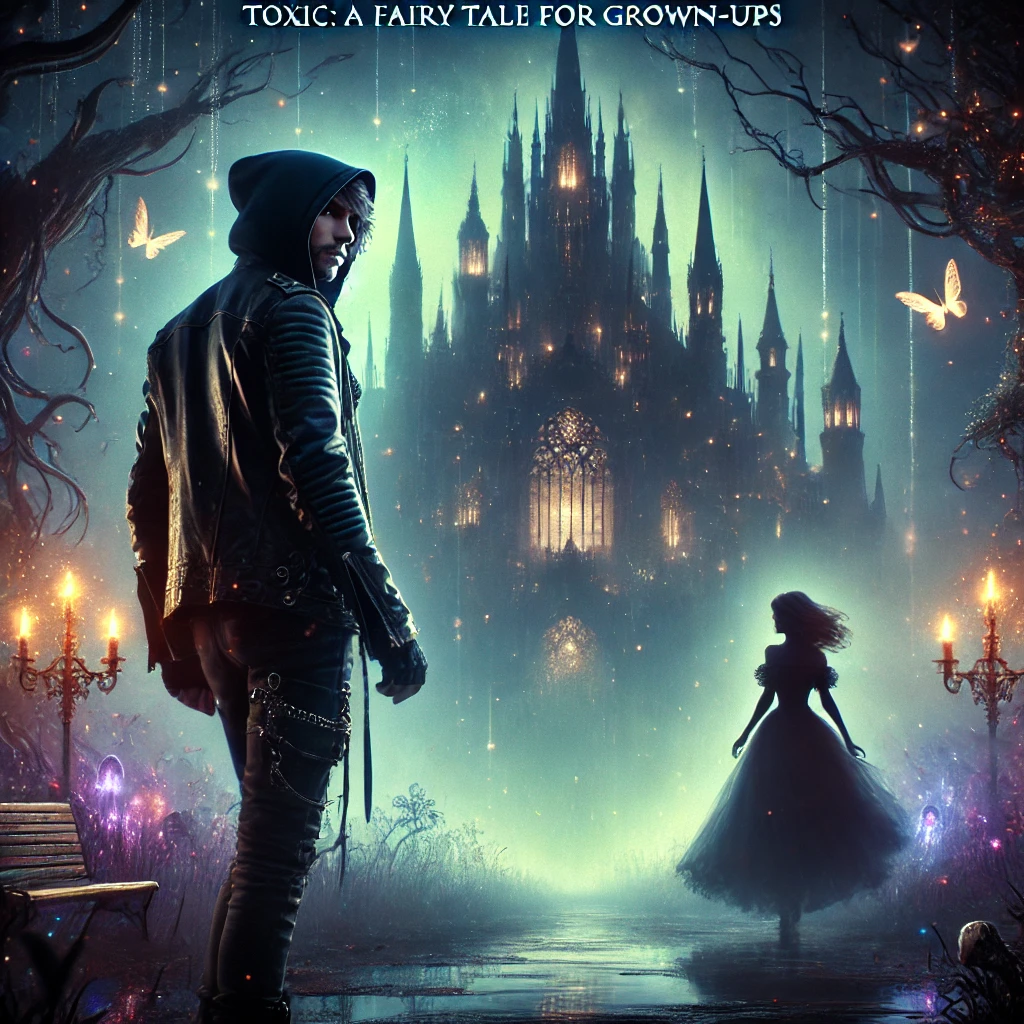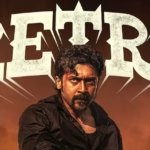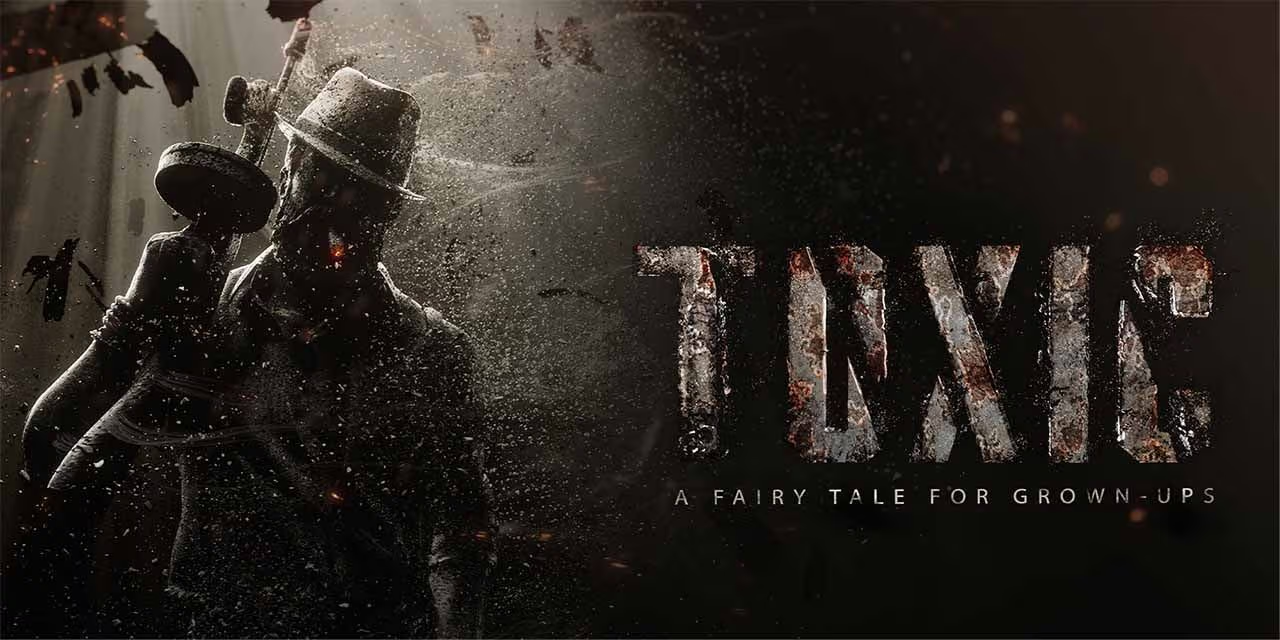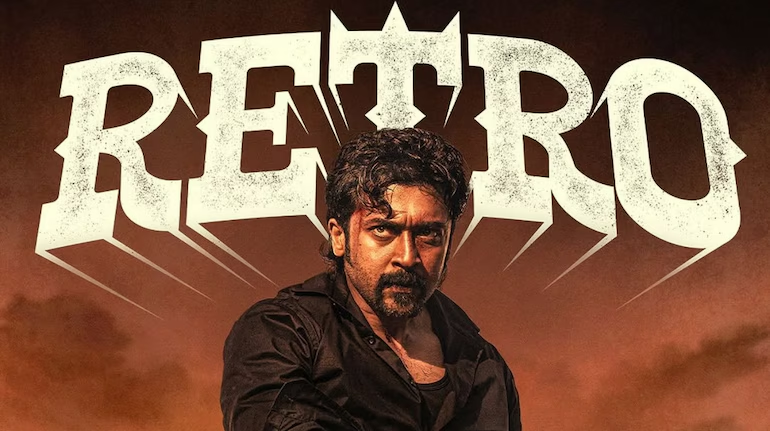As the curtains rise on one of Indian cinema’s most ambitious projects, “Toxic: A Fairy Tale for Grown-Ups” stands poised to redefine the boundaries of storytelling, production scale, and international appeal. Helmed by the visionary KGF star Yash and acclaimed director Geetu Mohandas, this enigmatic film has generated unprecedented buzz since its announcement. With its intriguing title, star-studded cast, and revolutionary bilingual approach, Toxic represents a bold new chapter in Indian cinema’s global journey. This comprehensive exploration delves into the making of what promises to be a landmark film in Indian cinematic history.
The Genesis of a Unique Vision
The journey of Toxic began long before its official announcement. Rumors of a collaboration between superstar Yash and internationally acclaimed director Geetu Mohandas first surfaced in April 2018, suggesting that Yash would embark on this project after completing his commitments to the KGF franchise. However, the project remained in developmental limbo until April 2023, when sources confirmed that Yash and Geetu had officially signed on for the venture, with production initially slated to begin in June of that year.
The film’s mysterious aura intensified in late September 2023 when Hollywood action choreographer J.J. Perry, renowned for his work on blockbuster franchises like John Wick and Fast & Furious, shared a photograph with Yash on Instagram. This subtle hint at their collaboration sent fans into a frenzy of speculation about the scale and style of action sequences being planned. Around the same time, reports emerged of Yash spending time at music composer Charan Raj’s studio, suggesting another potential creative partnership for the project.
On December 8, 2023, the film was officially announced as a collaboration between KVN Productions and Yash’s own production house, Monster Mind Creations. Initially titled “Yash 19” (marking Yash’s 19th film as a leading actor), the project quickly captured public imagination. The official title, “Toxic: A Fairy Tale for Grown-Ups,” was revealed shortly thereafter, adding another layer of intrigue to the already mysterious project.
Decoding the Title: A Fairy Tale With a Twist
The film’s unconventional title has been a source of fascination since its announcement. In recent interviews, Yash revealed that he personally conceived both the title and its intriguing tagline. Speaking about the creative process behind this unusual name, Yash explained, “You have fairy tales for kids, but nobody is making a fairy tale for grown-ups. We just thought we’d make a fairy tale for grown-ups.”
This concept of subverting traditional fairy tale narratives by creating one specifically for an adult audience speaks to the film’s ambition to break conventional storytelling molds. Fairy tales typically convey moral lessons through fantastical narratives, and Toxic appears to adopt this framework while addressing more complex, mature themes relevant to contemporary society.
Elaborating on the significance of the word “toxic,” Yash offered a thoughtful perspective: “The word ‘toxic’ has many layers, and it’s used in so many contexts. Yes, all of us are living in very toxic situations in so many ways. It felt like a very relevant and apt title for our film.” This multifaceted interpretation suggests that the film will explore the various forms of toxicity permeating modern life—whether in relationships, social structures, or broader societal contexts.
The juxtaposition of “toxic” with the concept of a fairy tale creates a compelling contradiction that hints at the film’s thematic approach. Traditional fairy tales present idealized worlds where good triumphs over evil in clearly defined moral landscapes. By introducing the element of toxicity, the film appears poised to subvert these expectations, perhaps offering a more nuanced, morally ambiguous narrative that reflects the complexities of adult life.
A Star-Studded Ensemble: The Cast of Toxic
The film boasts an impressive constellation of talents from across the Indian film industry, creating a truly pan-Indian appeal. At the center stands Yash, the charismatic superstar whose portrayal of Rocky in the KGF franchise catapulted him to nationwide fame. Toxic marks his first cinematic outing since the massive success of KGF: Chapter 2, making it one of the most anticipated comeback vehicles in recent memory.
Joining Yash is a formidable ensemble of established and emerging talents. South Indian cinema icon Nayanthara, often referred to as “Lady Superstar,” plays a pivotal role reportedly as Yash’s sister, adding significant emotional depth to the narrative. This casting marks a significant shift, as Kareena Kapoor Khan was initially slated to make her South Indian film debut in this role before exiting the project.
Bollywood star Kiara Advani reportedly portrays Yash’s love interest, bringing her characteristic grace and intensity to the romantic dimension of the story. Meanwhile, Huma Qureshi takes on an antagonistic role, promising a powerful performance as the film’s villain. The cast is further enriched by the presence of Tara Sutaria, Tovino Thomas, Darrell D’Silva, Akshay Oberoi, and several other accomplished actors from across the Indian film industry.
The diverse casting approach reflects the film’s ambition to transcend regional boundaries and appeal to a global audience. By bringing together performers from various film industries across India, Toxic creates a cinematic melting pot that mirrors its multilingual approach to storytelling.

Revolutionary Production Approach: A Bilingual Milestone
One of the most groundbreaking aspects of Toxic is its unique production methodology. The film is making history as the first large-scale Indian production to be conceptualized, written, and filmed simultaneously in both Kannada and English. This revolutionary approach represents a significant departure from the traditional model of filming in one language and later dubbing into others.
Director Geetu Mohandas elaborated on this innovative approach: “Our vision for Toxic was to craft a narrative that resonates authentically with audiences both in India and globally. We’ve strived to capture the nuances of the story in both Kannada and English, ensuring an authentic experience for viewers across different linguistic and cultural backgrounds.”
This bilingual production strategy reflects a sophisticated understanding of global cinema consumption patterns. The Kannada version will preserve the cultural nuances and regional authenticity essential for Indian audiences, while the English version facilitates worldwide accessibility without the limitations often imposed by dubbing or subtitling. Additionally, the film will be dubbed in multiple Indian languages, including Hindi, Telugu, Tamil, and Malayalam, further expanding its reach across diverse linguistic communities.
This approach represents a significant evolution in Indian cinema’s global ambitions. Rather than adapting content for international audiences as an afterthought, Toxic integrates global accessibility into its fundamental creative and production process. As Geetu Mohandas noted, “Toxic explores a collaboration of artistic vision and precision of commercial storytelling. It’s a journey that transcends borders, languages, and cultural confines, designed to connect with hearts and minds worldwide.”
Creating a Historical Tapestry: The Setting and Production Design
According to reports, Toxic unfolds across several decades, spanning from the 1940s to the 1970s. This expansive temporal canvas allows the film to explore significant historical periods while tracing the evolution of its characters and narrative across changing social, cultural, and political landscapes.
To authentically recreate these distinct eras, the production team established an elaborate 20-acre set on the outskirts of Bangalore. This massive construction project represents one of the largest set designs in Indian cinema history, meticulously replicating various historical periods with extraordinary attention to detail. The scale of this undertaking is evidenced by the involvement of over 1,000 crew members and 450 actors, including foreign extras, working to bring this historical tapestry to life.
The film reportedly unfolds against the backdrop of Goa’s drug mafia, suggesting a narrative that explores the dark underbelly of paradise. This setting provides a compelling contrast between the idyllic coastal beauty of Goa and the morally ambiguous world of organized crime, creating rich thematic terrain for exploring the film’s central concepts of toxicity and fairy tales for adults.
The attention to period authenticity extends beyond the set design to encompass costumes, vehicles, and other visual elements. Promotional materials have featured Yash in a crisp white tuxedo paired with a fedora and cigar, evoking the sophisticated aesthetics of mid-20th century crime films while adding a contemporary edge. This stylistic approach hints at the film’s intention to blend classic cinematic traditions with modern sensibilities, creating a timeless yet fresh visual language.
Technical Excellence: The Creative Team Behind the Scenes
The film’s ambitious vision is supported by an exceptional technical team comprising some of the industry’s most accomplished professionals. Cinematographer Rajeev Ravi, known for his visually striking work across various Indian film industries, brings his distinctive visual style to the project. His involvement suggests a cinematic experience characterized by rich visual textures and innovative framing techniques.
The action sequences, a crucial element given Yash’s reputation for high-octane performances, are being choreographed by Hollywood veteran J.J. Perry. With his experience on global action franchises like John Wick and Fast & Furious, Perry brings international expertise to the film’s action design. The production has implemented previsualization techniques to meticulously plan these sequences, ensuring both spectacular visual impact and performer safety.
The visual effects department is being helmed by DNEG, the renowned VFX studio that recently won the BAFTA Film Award for Special Visual Effects for their work on Dune: Part Two. Their involvement signals the production’s commitment to world-class visual effects that can compete with international standards. The music for the title announcement was composed by Jeremy Stack, though comprehensive details about the film’s complete musical team remain undisclosed.
Perhaps most notably, Yash himself has taken an active role in the film’s creative development, serving as co-writer alongside director Geetu Mohandas. This collaborative approach to screenwriting represents a significant evolution in Yash’s career, expanding his creative influence beyond his performance to the fundamental narrative architecture of the film. As Geetu Mohandas revealed in January 2025, “When our two worlds of thought collide, the result is neither compromise nor chaos—it’s the transformation that happens when artistic vision meets the precision of commercial storytelling transcending borders, languages, and cultural confines.”
The Director’s Vision: Geetu Mohandas’ Artistic Journey
The selection of Geetu Mohandas as director represents a fascinating creative choice that merges artistic sensibility with commercial appeal. Known for critically acclaimed films like Moothon and Liar’s Dice (India’s official submission to the Oscars), Mohandas brings substantial artistic credibility to the project. Her previous work has been recognized at prestigious international film festivals, including Sundance and Toronto, establishing her reputation as a filmmaker with a distinctive voice and global perspective.
Her collaboration with Yash, one of Indian cinema’s most commercially successful stars, creates an intriguing synthesis of artistic vision and mass appeal. Addressing this creative partnership, Yash remarked, “Her films might be different but I think she knows the mass pulse and she knows the entertainment also. I always try to entertain the audience… she is coming up with something really massy and a mega entertaining film.”
This statement illuminates the shared vision driving the project—a film that balances artistic integrity with entertaining storytelling, creating an experience accessible to diverse audiences without compromising creative ambition. Mohandas’ own comments about the film reveal her passionate commitment to this dual approach: “Toxic – a fairy tale for grown-ups is a story that defies convention and is sure to provoke the chaos within us.”
Her reflections on collaborating with Yash further illuminate their creative dynamic: “I have observed his brilliance and to those who know him or follow his journey, his process is as mysterious as it is meticulous. It is both a privilege and a thrill to have co-written this captivating world alongside a mind that sees the extraordinary where others see the ordinary.” This mutual respect between director and star suggests a genuinely collaborative creative process that has shaped the film’s development.
The Global Cinematic Experience: Marketing and Anticipation
The marketing campaign for Toxic has been strategically crafted to build anticipation while maintaining an aura of mystery around the film’s specific narrative details. The first official announcement came on December 8, 2023, generating immediate interest due to Yash’s involvement. Subsequently, the first poster was unveiled on January 7, 2025, followed by a first-look teaser released on January 8 to coincide with Yash’s 39th birthday.
The teaser offered tantalizing glimpses into the film’s aesthetic without revealing plot specifics. Film critic Rahul Malhotra compared its visual style to “the chaotic energy of the elaborate opening sequence of Damien Chazelle’s Babylon, combined with the maximalism of Baz Luhrmann’s The Great Gatsby.” These comparisons to acclaimed international films highlight the global cinematic vocabulary the production is drawing upon, positioning Toxic within a conversation about world cinema rather than limiting it to regional or national contexts.
Yash himself contributed to the marketing narrative by teasing the movie’s poster with the intriguing tagline, “His untamed presence is your existential crisis,” suggesting philosophical dimensions to what might otherwise be perceived as a straightforward action thriller. This careful balance of action, style, and intellectual substance has become a hallmark of the film’s promotional strategy.
Initially scheduled for release on April 10, 2025, the film has faced production delays that have necessitated postponement. While a new release date has not been officially announced as of March 2025, anticipation continues to build, with fans eagerly awaiting updates on the film’s progress.
Beyond Entertainment: Thematic Explorations and Cultural Impact
While comprehensive plot details remain closely guarded, the available information suggests that Toxic will explore several complex thematic territories. The setting within Goa’s drug cartel world provides fertile ground for examining moral ambiguity, power dynamics, and the corrupting influence of wealth and power—all resonating with the film’s “toxic” conceptual framework.
The period setting spanning from the 1940s to the 1970s allows the narrative to engage with significant historical transitions in Indian society. This era encompasses India’s independence, the immediate post-colonial period, and the subsequent decades of national development and cultural transformation. By placing its crime narrative against this historical backdrop, the film potentially creates opportunities to explore how criminal enterprises evolve in response to changing social and political conditions.
The “fairy tale for grown-ups” concept suggests a narrative that might subvert traditional moral frameworks, perhaps challenging audiences to reconsider conventional notions of heroes and villains. Traditional fairy tales typically present clear moral distinctions and satisfying resolutions where virtue triumphs over vice. An adult reimagining of this structure might introduce more complex ethical questions without easy answers, reflecting the moral ambiguities that characterize mature understanding of the world.
Beyond its thematic ambitions, Toxic represents a significant evolution in Indian cinema’s approach to global filmmaking. By conceptualizing and executing a bilingual production at this scale, the film establishes a potential new model for Indian productions with international ambitions. If successful, this approach could influence how future Indian films are developed for global audiences, potentially accelerating Indian cinema’s growing influence in the worldwide entertainment landscape.
Conclusion: A New Chapter in Indian Cinema
As Toxic continues its production journey toward eventual release, it already stands as a milestone in Indian cinema’s evolving global narrative. The unprecedented combination of a commercially successful superstar, an internationally acclaimed director, a massive production scale, and a revolutionary bilingual approach positions the film as a potential game-changer in how Indian cinema addresses world audiences.
The film’s ambition extends beyond mere entertainment to create what Geetu Mohandas described as “a film not just to be watched, but to be felt.” This goal of creating an emotionally and intellectually engaging experience that transcends cultural and linguistic boundaries reflects a sophisticated understanding of cinema’s potential as a universal language.
Whether Toxic ultimately fulfills its considerable ambitions remains to be seen. However, the very existence of such a boldly conceived project signals the growing confidence and global vision of Indian cinema. As the film industry continues to evolve in an increasingly interconnected world, projects like Toxic represent essential experiments in finding new ways to tell distinctively Indian stories with truly global appeal.
For Yash, the project represents a crucial next step following the phenomenal success of the KGF franchise. For Geetu Mohandas, it offers an opportunity to bring her artistic sensibilities to a much larger canvas and audience. For Indian cinema as a whole, it potentially opens new doors to international recognition and appreciation. As the release date approaches, audiences worldwide await this fairy tale for grown-ups with mounting anticipation, eager to discover what toxic enchantments it might hold.
Citations:
- https://www.globalbollywood.info/post/yash-reveals-the-thought-process-behind-the-title-of-toxic-a-fairy-tale-for-grown-ups
- https://www.hindustantimes.com/entertainment/others/yash-came-up-with-the-title-of-his-next-toxic-shares-why-it-is-a-fairy-tale-for-grownups-101729694394118.html











